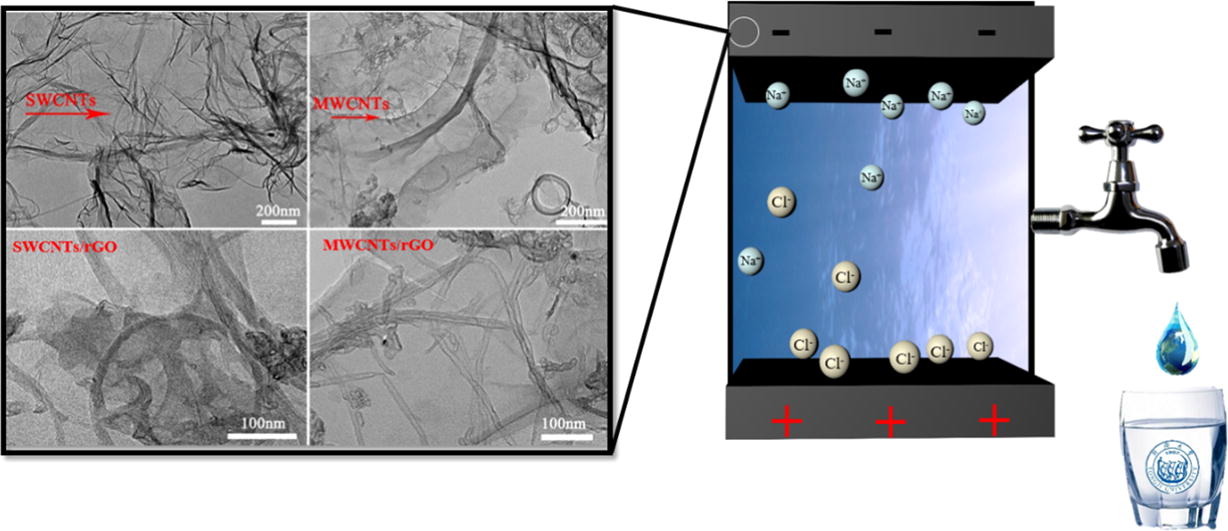ABSTRACT: Capacitive deionization (CDI) is a technology used to remove salt from brackish water, and it is an energy-saving, low-cost method compared with other methods, such as reverse osmosis, multi-stage ash distillation and electrodialysis. In this paper, three-dimensional (3D) graphene hydrogels modified with single-walled carbon nanotubes (SWCNTs) or multi-walled carbon nanotubes (MWCNTs) were synthesized by a one-step water bath method to increase the conductivity of materials and reduce the aggregation of the graphene sheets. The CDI performance differences between the two materials were compared and discussed. The results suggested that SWCNTs/rGO had a higher electrosorption capacity (48.73 mg/g) than MWCNTs/rGO, and this was attributed to its high specific surface area (308.37 m2/g), specific capacity (36.35 F/g), and smaller charge transfer resistance compared with those of the MWCNTs/rGO electrode. The results indicate SWCNTs/rGO is a promising and suitable material for CDI technology and we provide basic guidance for further CNTs/graphene composite research
